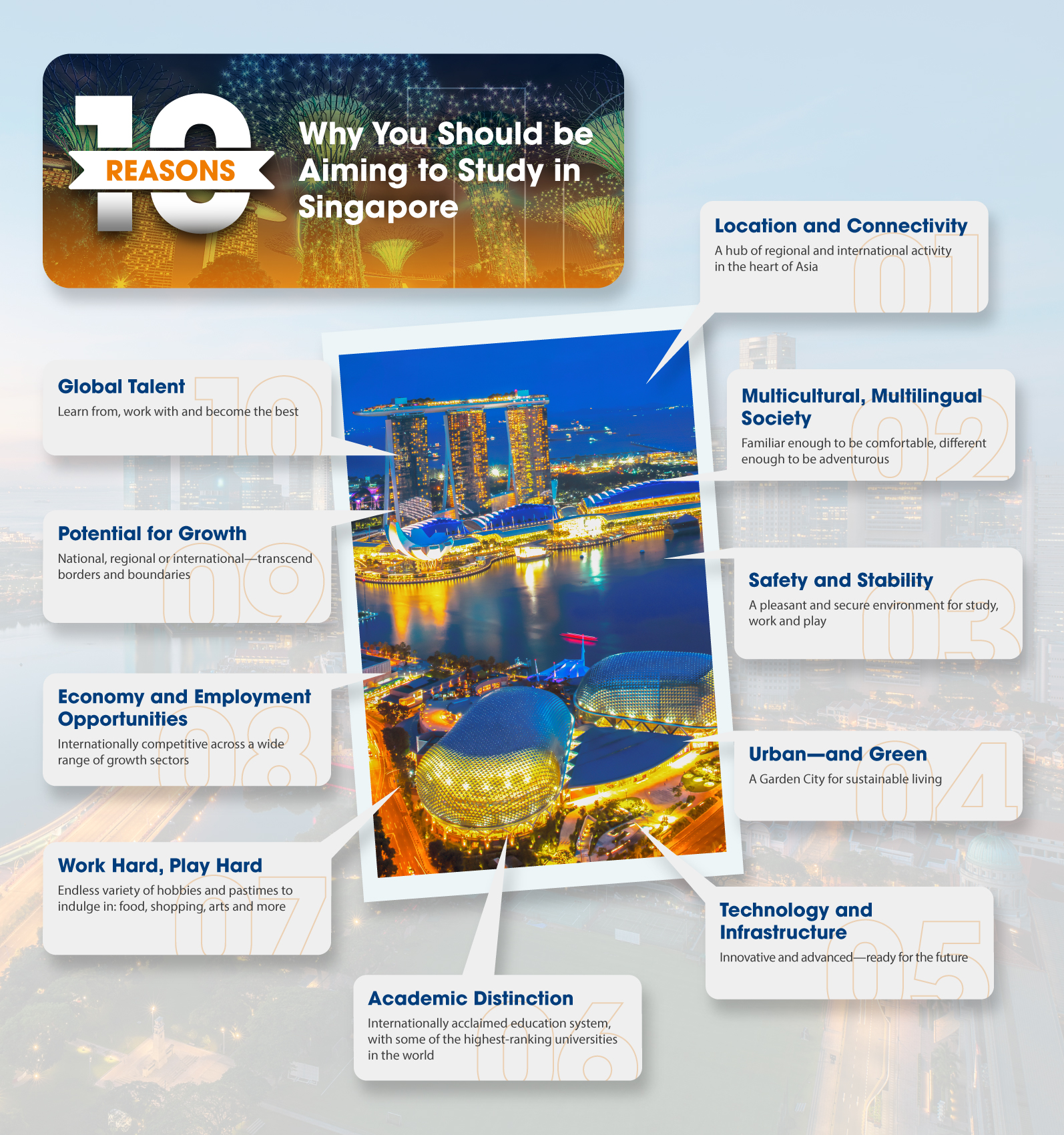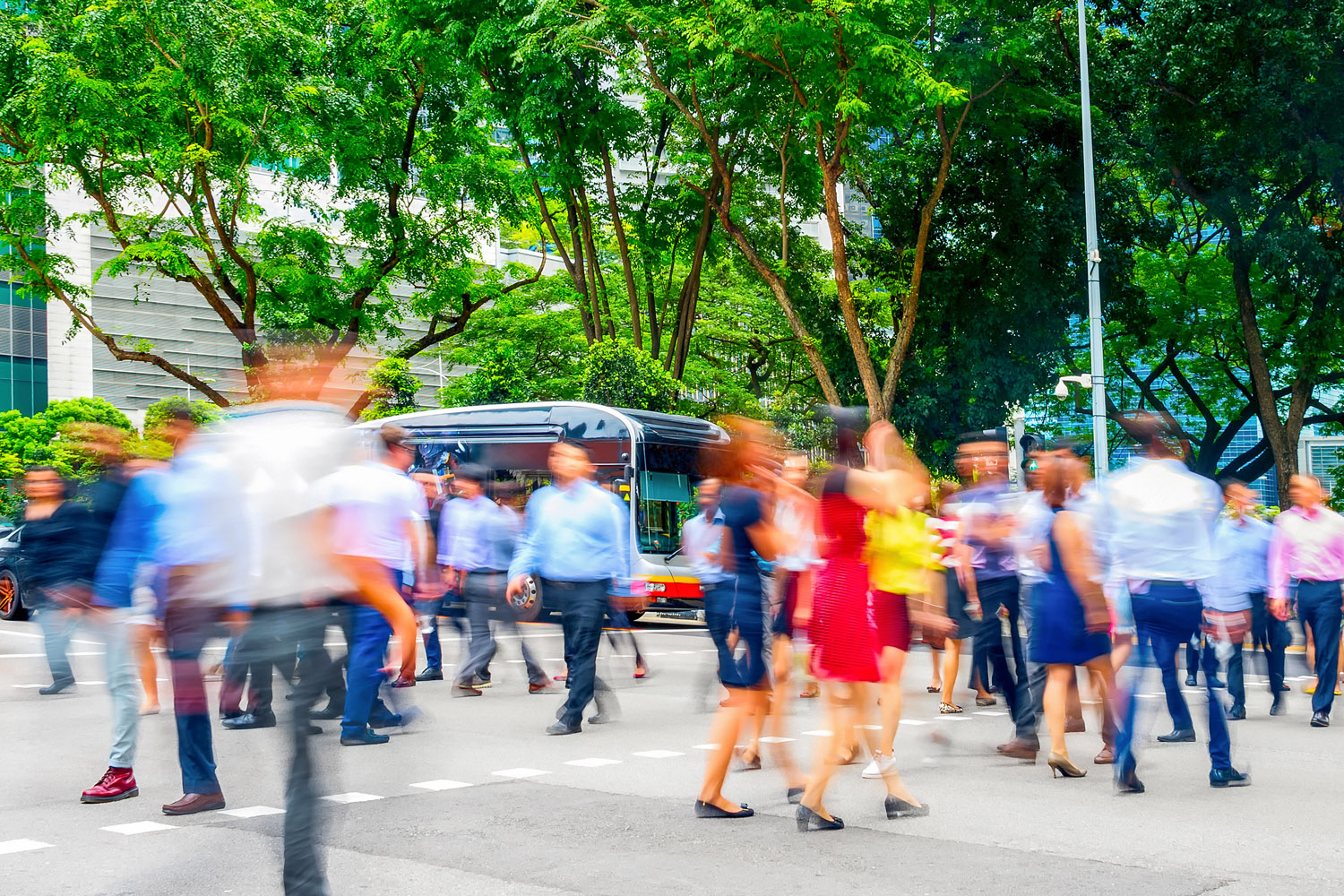On most world maps, Singapore appears insignificant. Indeed, it has been called “The Little Red Dot”. So, how has this tiny tropical island nation in Southeast Asia managed to claim a disproportionately large share of the spotlight on the international stage? Why are billionaires, multinationals, top global talent and students flocking to the country? What makes Singapore the place to be?

With a total population of about 5.7 million people and a land area only slightly smaller in size than that of New York City, Singapore is the second-most-densely populated country in the world.
High-rises dot the skyline, from government-built Housing Development Board (HDB) residential flats and private condominiums to skyscraper commercial buildings. The country has excellent infrastructure and transport networks, stemming from its heritage as an important regional port.
Today, it remains one of the busiest ports in the world, but has also grown to become a global hub for financial services, with manufacturing and services being key contributors to the economy. Biotechnology as well as information and communications are counted among its emerging industries.
Apart from a strong economy, its stable political environment and low crime rate make Singapore an attractive place to live and work. Locals come from various cultural backgrounds, and it is not unusual to overhear a conversation on the street mixing up words from two or more of the official languages (Malay, English, Chinese and Tamil). The international community is quite sizable too; four out of every 10 people one might meet on the street will probably hail from another country.
 Housing Development Board (HDB) residential flats
Housing Development Board (HDB) residential flats
Because of this melting pot environment, Singaporean society is generally tolerant and respectful of differences. The rich diversity that exists here also means that a multitude of cuisines to suit any palate can be found across the island. Food is a big deal in Singapore, and social gatherings more often than not involve sharing snacks, drinks or a meal.
 Busy street in Singapore
Busy street in Singapore
In general, the lifestyle in Singapore is best described as being urban. The average Singaporean lives in a high-rise flat or apartment, is tech-savvy (Internet and mobile device use is relatively high), and likely spends a significant amount of his or her time in an air-conditioned space (the world-famous shopping malls along Orchard Road being a popular choice to unwind and indulge in a little retail therapy).
That said, the many parks and green spaces around the island also attract a substantial number of visitors during weekends and public holidays. Environmental awareness is growing, accompanied by increasing investments in green technologies and innovation.
Technology, research and development are an integral part of Singapore’s strategic plan for the future. Apart from striving to create a good environment for business, growth and innovation, it recognises the importance of human talent—evident from its emphasis on education and lifelong learning. A Quacquarelli Symonds analysis declared that apart from having the fourth best higher education system in the world, Singapore is home to the most world-class programmes in Asia1.
- Smart Nation and Digital Government Office
- Statista, Satisfaction with Infrastructure Worldwide 2023
- UN Trade and Development, Technology and Innovation Report 2023
- World Intellectual Property Organisation, Global Innovation Index 2024
- Start-up Genome, Global Startup Ecosystem Report 2024
- IMD World Competitiveness Center, World Talent Ranking 2024
- INSEAD, The Global Talent Competitiveness Index 2023
- Economist Intelligence Unit, Business Environment Rankings 2023
- Orbis Crossborder Investment Database, “Search parameters – (i) Business Function: Regional Headquarters and (ii) Status: Completed – confirmed.” 2013-2023
- Economic Development Board Singapore
For many, Singapore represents a chance to scale greater heights of success—and if that involves earning a postgraduate degree, one should really look more carefully at the value proposition offered by the country’s flagship university, the National University of Singapore.
1As reported in The Straits Times, 4 Mar 2021.